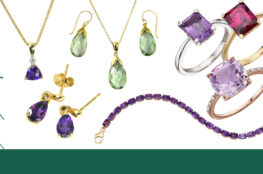
A few years ago I visited an exhibition called the Cheapside Hoard. One particular exhibit, a 350 year old watch, stood out amongst all the others. Set into a carved Colombian emerald and cut from an emerald prism it had been discovered along with other treasure hidden under some floorboards by workmen centuries later! So with this inspiration my article for May is it birthstone the spectacular emerald. Its name means “green gem” and as its colour suggests represents the new growth of spring but is also associated with both the 20th and 35th wedding anniversaries.
Emerald is part of the beryl family of gemstones that includes aquamarine which we looked at in March. Throughout history it has been the most highly sought after and valued of the group.
Legend has it that emerald could cure some diseases and had the power to reveal the future if placed under the tongue. It has long been associated with eyesight and was said that Nero used a sliced emerald to lengthen his vision whilst watching the gladiators in the arena!
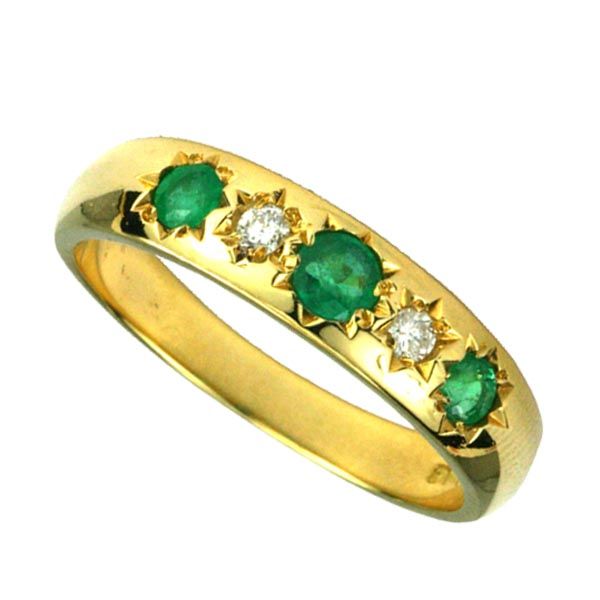
9ct yellow gold 5 stone emerald and diamond ring

9ct yellow gold channel set emerald & diamond half eternity ring

9ct yellow gold emerald & diamond pendant & chain
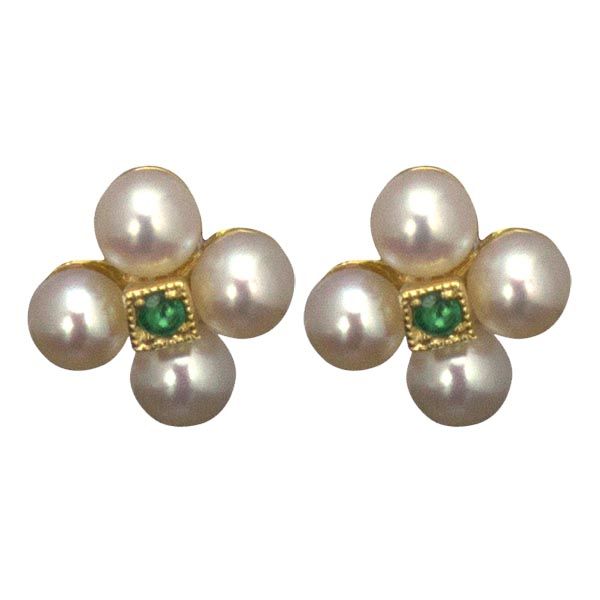
9ct yellow gold emerald & pearl stud earrings
We tend to think of emeralds as being almost grass green but they can be virtually any shade from deep vivid green to being so pale they can be mistaken for aquamarine. The cause of the green colour in emeralds comes from chromium, the same element that causes red in ruby. The most desirable colour is the strong slightly bluish green which you see in Colombian emeralds.
Clarity and transparency are important factors when buying an emerald and will affect the price. However Emerald is probably the one gemstone that stands out above all others as being accepted despite its imperfections. Very few emeralds are ‘clean’ and it is considered normal for an emerald to have inclusions. Inclusions frequently resemble foliage that give the gemstone a cloudy appearance. Such inclusions are know as ‘jardin’, French for garden.
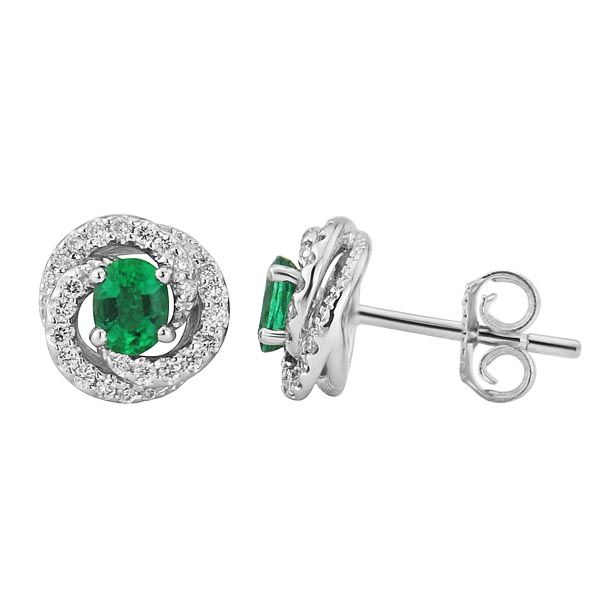
18ct white gold emerald & diamond fleur earrings
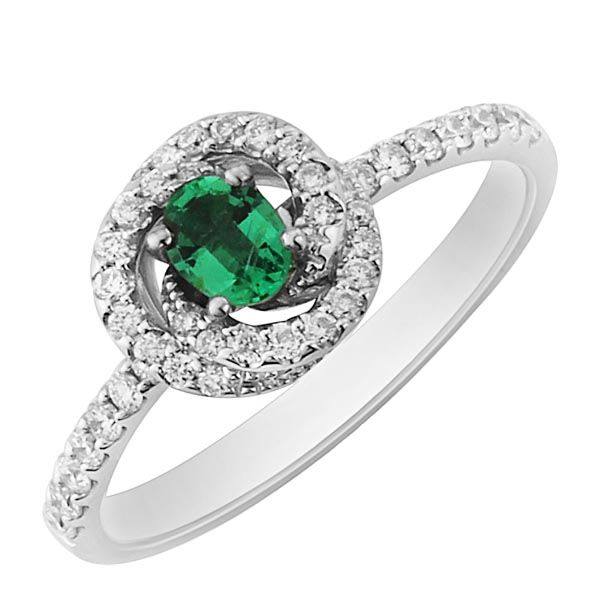
18ct white gold emerald & diamond fleur ring

18ct yellow gold 3 stone diamond (0.50pt) and emerald yellow gold ring
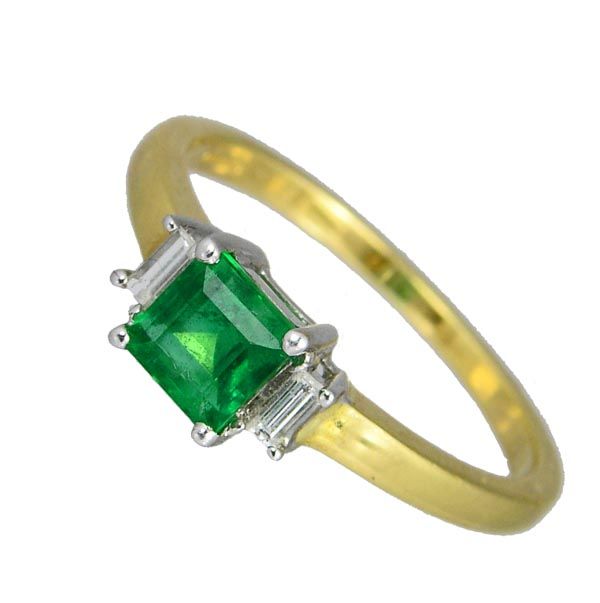
18ct yellow gold square cut emerald ring with diamond set shoulder
Colombia is by far the most important source of fine antique emeralds and these were brought back by the conquistadors when the Spanish invaded the Americas in the 1500’s.
Poorer quality emeralds were used for their gentle and subtle colours in the Arts and Crafts jewellery whilst in comparison the finer quality stones cut into rectangles and set into platinum pieces in the 1920’s and 1930’s.
Although the emerald is cut into other shapes, we probably associate this gem with a rectangular cut. The emerald cut (step cut) was specifically designed to maximise this valuable stone and to intensify the colour. The corners were also removed because of the emeralds brittleness and had a tendency to chip whilst being set.
It is generally accepted that almost all emeralds are improved with oils and resins and this isn’t anything new or to worry about. This practice has been going on for centuries but because of this great care must be taken when cleaning. It is not advisable to use an ultrasonic or steam cleaner, or expose it to heat as the oil can be drawn out.


